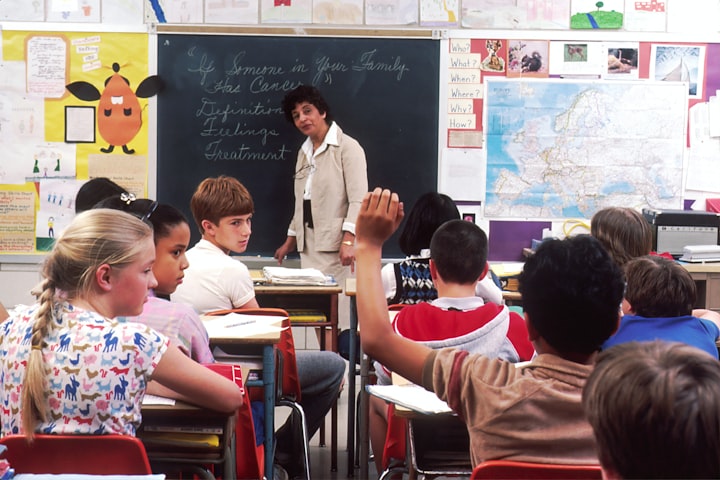
Looking at the timeline, it is not surprising that many high school students grow up with chronic stress. Each week, students have two tests, a presentation, three questions, and a poster every 25 minutes, as well as a typical homework assignment for their seven lessons.
Many schools around the world have reduced the number of homework assignments or examinations they have to reduce their workload. New York City's high schools have tried to strike a balance by providing extra assistance to needy students and by adding extra homework to their curriculum. they also changed or postponed test dates so that they would not be included.
As schools across the country switch to online platforms, students do not receive as much guidance and resources as they could on their own. Teachers in public schools, especially in low-income areas with high students and teachers with little experience and access to technology, are unable to broadcast their lessons online, so students learn face-to-face. This staff shortage creates another problem: the burden on students remains the same even when classes go online.
Studies show that students receive more homework than experts recommend, which can lead to stress and poor health outcomes. Many students are frustrated with their work and go back to cheating to complete tasks.
During the epidemic, we did the following research on homework, and our findings influenced the type of homework that should be done at home during school hours and when students return to class. Nowadays, it can be difficult for students and teachers to distinguish between homework and homework. Excessive activities can cause students to miss out on family time and food, which can harm their health.
Homelearning encourages students to focus on their work and encourages the practice of good research practices. Homework provides students with a range of practical skills to take on in their learning and technical life, from time management and planning to self-motivation and independent learning.
Students do not always succeed when it comes to dealing with a lot of work. They rely more on teachers to reduce their stress than their methods, which are effective and ineffective in reducing their fears at school. Teachers are less likely to reduce the fear of "students, in part because the responsibility belongs to students" parents.
New research sheds light on the causes of these feelings, showing that overloading students can not only create academic stress but can also affect students' mental and physical health and disrupt learning.
A study by Mollie Galloway of Lewis and Clark College found that students who spend a lot of time doing homework at school were very busy, maybe anxious, and report other physical symptoms due to stress.
Researchers surveyed more than 4,000 students to find out what extra work was like as a stressor in their lives. They then used survey data to assess students' perceptions of school work, well-being, and behavior in a sample of 4,217 students from 10 high schools in California's high-performing communities. The research data Galloway and Pope used to finalize the answer to the question of how these students view schoolwork.
With more than $ 90,000 family income in high-income communities in California, 93 percent of the 4,217 students in ten high-performing high schools in those communities go to college for two or four years.
According to the National Center for Education Statistics (CFE), 19.4 million students are enrolled in public schools. According to a survey of school staff, the average high school student spends six and a half hours on a school day, 180 days a year. This means that students spend 1,170 hours during the school year.
If a student takes a 16-hour lesson and spends 3.2 hours a week on homework, that amounts to 4.8 hours a week. When assigning homework, consider how much time each assignment takes and recommend a reasonable reduction in the student's free time. One old rule of schoolwork is that a college student should study for at least two hours an hour at Carnegie.
The proposed time limit should be based on the purpose of the activity and the age and skills of the learners. Starting a classroom activity (learning alignment) can help you estimate how long it will take for different students to get help.
Student school needs can cause many diseases, so students should put homework first in their lives. Homework is more important than grades, and that removes the stress of depressed students.
Contrary to the myth that they do not know, not giving up homework enables students to decide for themselves what activities they should do to show art (Vatterott, 2018). The cultural narrative about homework focuses on how many students do homework. A 2014 Brown Center report on American education found that the amount of homework assigned to schools has not changed since 1984 except for 9-year-olds, meaning those in charge of the curriculum no longer see the need to add more.
50% of students reported feeling depressed in our study at Student Life in the United States, 25% said homework had been their main source of stress, and on average a third of their study time found them depressed, anxious, or stressed.
About the Creator
Dip Rai
I am a content writer and love to Code.





Comments
There are no comments for this story
Be the first to respond and start the conversation.